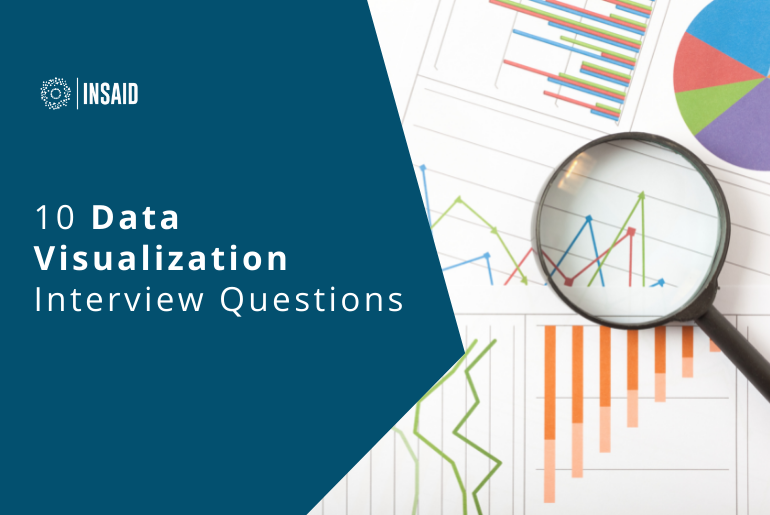Data visualization is one of the most important and final steps in the data lifecycle. Data visualization helps brands go beyond the boring texts and long data lists and effectively portray their findings, trends, analyses, revenues, user behaviour, metrics, and more using visually appealing techniques.
With a large influx of data and a creative shift, companies have started focusing more on the right representation of data. Consequently, the demand for Data Scientists with strong data visualization skills has skyrocketed in recent times. So, if you are interviewing for a Data Scientist role, you are highly likely to be asked questions on your data visualization skills.
In this article, we have the list of the top 10 data visualization questions (with answers). These questions will help you prepare and crack Data Scientist interviews.
Let’s get started.
What is Data Visualization?
After manipulating the data to your use, you have to present it for others to understand. This process is known as Data Visualization. Data can be presented or visualized using tools and techniques such as infographics, graphs, fever charts, histograms to name a few. Data visualization helps present your trends and patterns to customers, stakeholders, and team members for activities as varied as driving sales to product development to performance analysis.
Data Visualization Questions for Data Scientist Interview
- Which are the best libraries for data visualization in python?
Essentially, there are four libraries that are used for data visualization in python:
- Matplotlib
- Seaborn
- Plotly
- Bokeh
- Write the syntax to plot Pair Plot in python.

- What is the use of Stacked plots?
Stacked plots are used to modify bar charts to provide support to other visual variables. In a stacked plot, one variable is plotted on top of the other.

- How can we visualize more than three dimensions of data in a single chart?
To visualize data beyond three dimensions, we need to use visual cues such as color, size, and shape.
- Color is used to depict both continuous and categorical data.
- Marker Size is used to represent continuous data. Can be used for categorical data as well. However, since size differences are difficult to detect, it is not considered the most appropriate choice for categorical data.
- Shapes are used to represent different classes.
- How to add a title to subplots in matplotlib?

- How to plot the distribution of customers by age?
The distribution of customers by age can be plotted simply by creating a histogram from the Age column of the customer’s DataFrame.
![]()
- What is the purpose of a Scatter plot?
Scatter plots are used to observe relationships between two different numeric variables.

- Define IQR in a box plot.
IQR stands for interquartile range. In a box plot and IQR is the length of the box.
- What is a Boxplot?
A Box and Whisker Plot (or Boxplot) are used to represent data distribution through their quartiles. The graph looks like a rectangle with lines extending from the top and bottom. These lines are known as the “whiskers”, and represent the variability outside the upper and lower quartiles.

- What is a heat map in Python? Create a correlation matrix using the core function of the data frame?
Heatmaps are used to cross-examining multivariate data and represent it through color variations.

We hope you found this article useful. If you have a Data Scientist interview coming up, also check out our articles on data cleaning, manipulation, python, and SQL interview questions. These will help you revise your basics and practice Data Scientist interview questions.
 Pin
PinIf you want to know more about how to prepare for a Data Scientist interview, let us know in the comments below.






